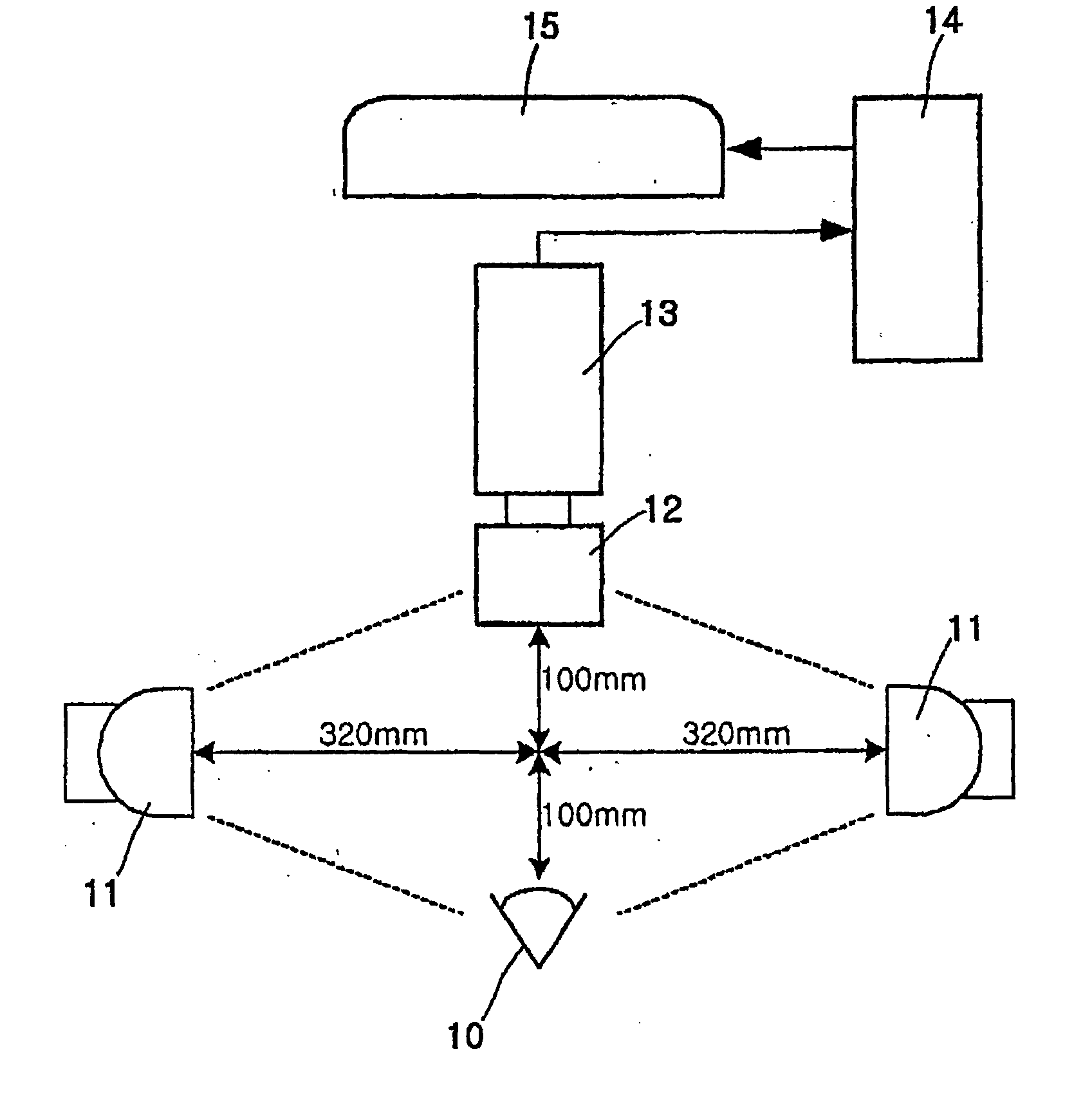Daubechies wavelet transform of iris image data for use with iris recognition system
a wavelet transform and iris recognition technology, applied in the field of iris recognition system, can solve the problems of discontinuous values, inability to obtain high resolution images, and need more arithmetic quantities, and achieve the effect of reducing the false acceptance rate (frr), reducing the capacity characteristic vector, and reducing the false acceptance ra
- Summary
- Abstract
- Description
- Claims
- Application Information
AI Technical Summary
Benefits of technology
Problems solved by technology
Method used
Image
Examples
Embodiment Construction
[0027] Hereinafter, a method of recognizing a human iris using a Daubechies wavelet transform according to the present invention will be explained in detail with reference to the accompanying drawings.
[0028] FIG. 1 shows the constitution of image acquisition equipment for use in a method of recognizing a human iris according to the present invention. Referring to FIG. 1, the constitution of the iris image acquisition equipment will be explained. The image acquisition equipment for use in the method of recognizing the human iris according to the present invention comprises a halogen lamp 11 for illuminating the iris in order to acquire clear iris patterns, a CCD camera 13 for photographing an eye 10 of a user through a lens 12, a frame grabber 14 connected to the CCD camera 12 for acquiring an iris image, and a monitor 15 for showing the image, which are currently inputted to the camera, to the user so that acquisition of correct images and positioning convenience of the user can be ...
PUM
 Login to View More
Login to View More Abstract
Description
Claims
Application Information
 Login to View More
Login to View More - R&D
- Intellectual Property
- Life Sciences
- Materials
- Tech Scout
- Unparalleled Data Quality
- Higher Quality Content
- 60% Fewer Hallucinations
Browse by: Latest US Patents, China's latest patents, Technical Efficacy Thesaurus, Application Domain, Technology Topic, Popular Technical Reports.
© 2025 PatSnap. All rights reserved.Legal|Privacy policy|Modern Slavery Act Transparency Statement|Sitemap|About US| Contact US: help@patsnap.com



